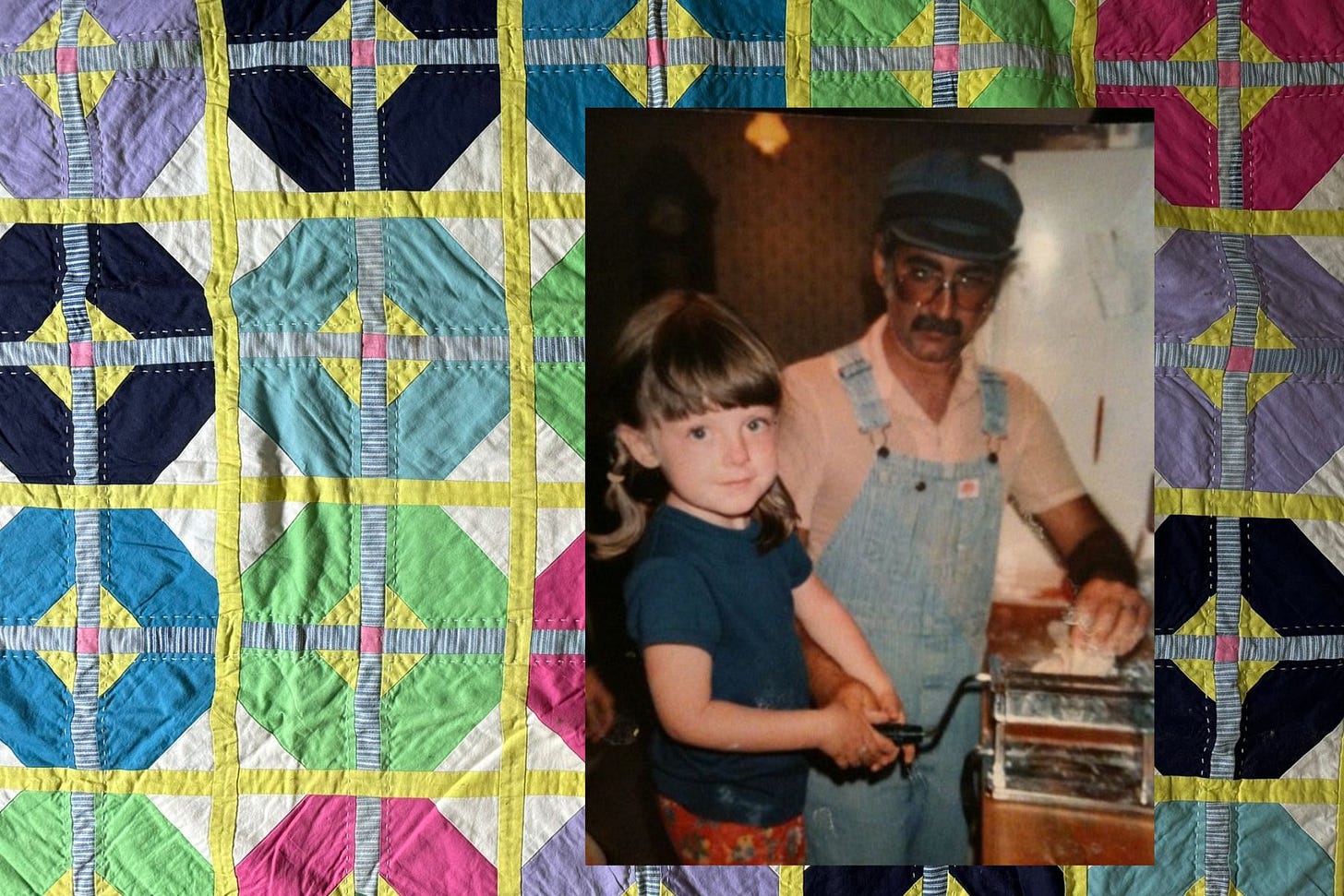
In 2012, on an old blog, I posted "The Story of Some Overalls,” a four-picture timeline with short text outlining the life of a piece of clothing that had stayed with me since I was born—a pair of Round House blue and white pinstriped overalls. The sentimentality is blatant in the content, but there’s more to it upon reflection. And I found a few more photos to add to the mix. I can now see this was the starting point of my dealings with being a “Thing-Finder,” one of my top Pippi Longstocking takeaways.
"I am a Thing-Finder, and when you're a Thing-Finder, you don't have a minute to spare…. The whole world is full of things, and somebody has to look for them. And that's just what a Thing-Finder does."
Pippi Longstocking, by Astrid Lindgren, 1945
I think aging and loving “stuff” is complicated. I mean, aging is complicated on its own, but when you are a self-diagnosed Thing-Finder, it’s an added layer of literal muck. I’ve culled more than half of my things since 2012, and I still have what feels like a lot. And I am ready to let go of even more. It’s been twelve years, no less than six homes later, with two cross-country moves and some significant surgeries that have limited my body’s capacity, all leading towards an ever-shifting perspective of less feels like it’s going to be better. Some questions that I think about these days are;
How can you be a responsible stuff lover? Another way of saying this is, who will deal with my curio shelves, stacks, piles, clippings, letters, and treasures when I die or if I cannot? Do I even want someone to deal with it? I don’t want to burden my partner with the stress of trying to crack the code of what should end up with who, so how can I best organize my things so they end up with who they should? This leads me to think about creative will writing. Is that a thing? Tell me if it is. And since I intentionally don’t have kids, what about family stuff? What is an heirloom anyhow? I love thinking about that. What’s the point of even bringing something home? Can I even stop? And it goes on and on and on…
Yes, I am addicted to yard sales, garage sales, estate sales, thrift stores, junk shops, dumpsters, and free piles. I want the dopamine of finding the thing I didn’t know I needed or adding to one of my narrowed-down collections (i.e., miniature chairs). Just because I’ve created better containers about what I can bring home doesn’t mean it’s functional or perfect, and I’m constantly what I refer to as “stuff shuffling.” It’s a lifestyle. It’s a part of my creative practice. I have perfected a better balance of letting go, often repeating my mantra, “There’s always more stuff.” This mantra used to have two parts: there’s always more stuff, and there’s always another party, but since I rarely have the energy for a party, I’ve retired that half and just come to terms with less or no party these days. I suppose it is part of learning to let go, although when I have FOMO, I still whisper, “There’s always another party” to myself in consolation sometimes, and it mostly works. Sometimes I really miss the party.
Cortney Heimerl had started making her quilting practice available to friends. You should also know that Cortney was my co-author for my first book, Handmade Nation: The Rise of D.I.Y. Art, Craft, and Design (2008); based on my first feature-length documentary, it’s essential to loop those stories together to tell the bigger story later. Asking her to take this pair of perfectly thin but not yet destroyed overalls that both my parents and, later, I all wore and turn them into something functional was pivotal. At this time, I didn’t consider the functionality of an object when I was drawn to take it home. It was a slow roll into a new chapter where a hand-carved wooden spoon would be more likely to come home with me than a miscellaneous tchotchke covered in glitter…usually.
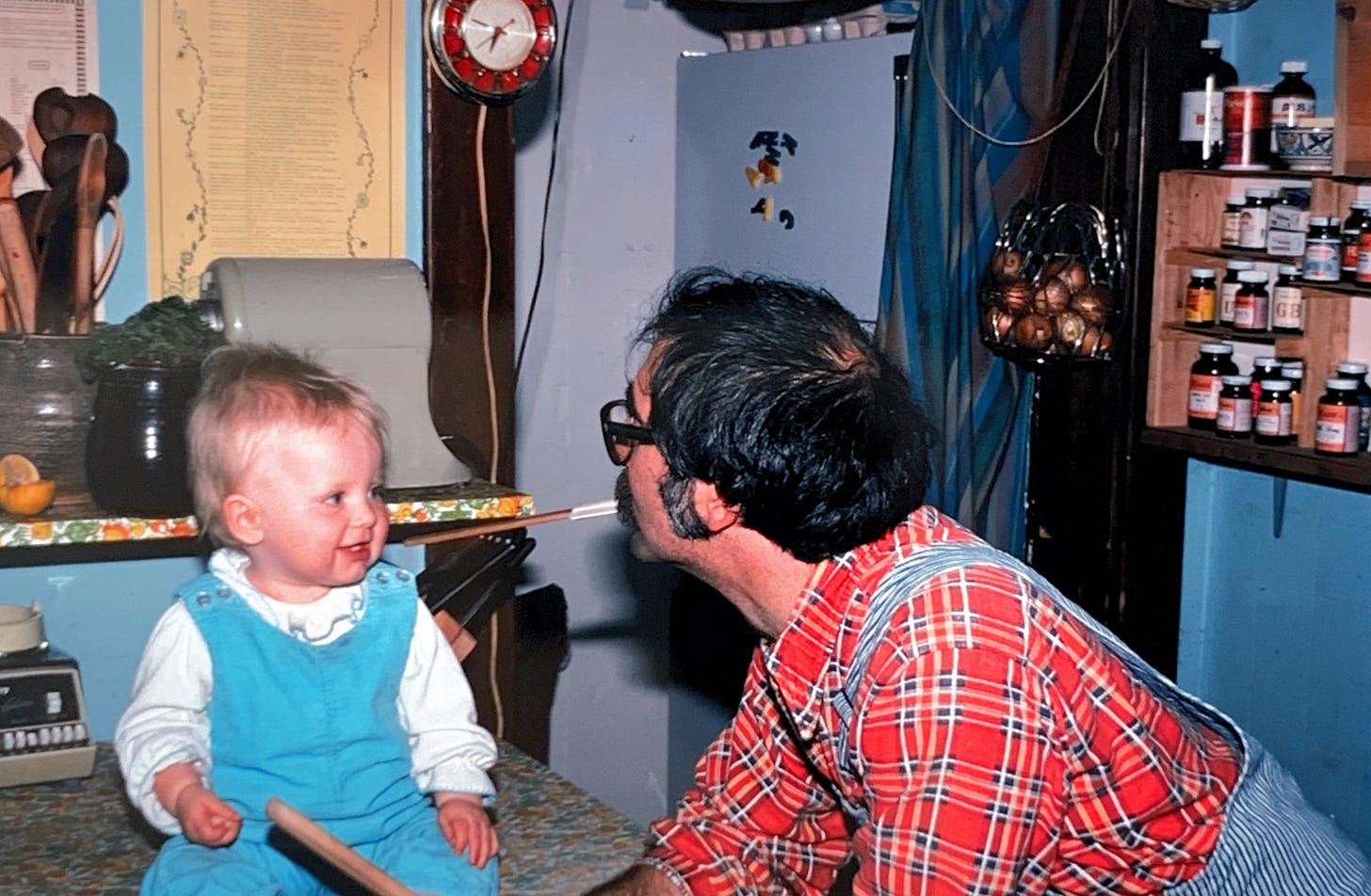

Some things I love about this quilt are the moments where you see stains in the overall fabric—the hand stitching. Cortney’s choices of color she used to pull it all together. The back fabric was from a trip I had taken to Java the year before with my dad, and the small 1” squares came from Aaron Polansky’s grandmother's fabric collection. Cortney not only stitched her initials (thank you Coco, I love a date for context these days) on the back but also sewed in the Round House tag from the front of the bib. By request, she also incorporated a small vintage zodiac-themed panel I had found somewhere that reads, “YOU WILL HAVE A BETTER END THAN BEGINNING,” with SCORIPO in the bottom right corner. A hat tip to my sun sign and astrologer father.
Interestingly, it’s taken me a long time to think about how my love for stuff and my passion for working in archives—stepping into someone else's reserve of piles and stacks can be a potential key to becoming someone who has less at home. This has worked for me in some ways and not in others (i.e., binders of printed-out articles, photos, and oral histories for research). But my takeaway, aside from being grateful that Cortney was willing to craft such a beautiful object for me, after revisiting this quilt story, is that archives can be a Thing-Finder salve.

“The Story of Some Overalls” ended with this, and it is comforting to know that some things, like my amazing humor, haven’t changed… “Overall, a happy ending and new beginning.” You are welcome.





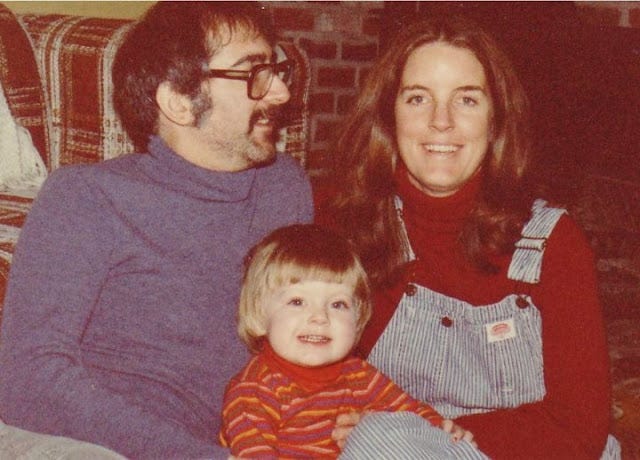

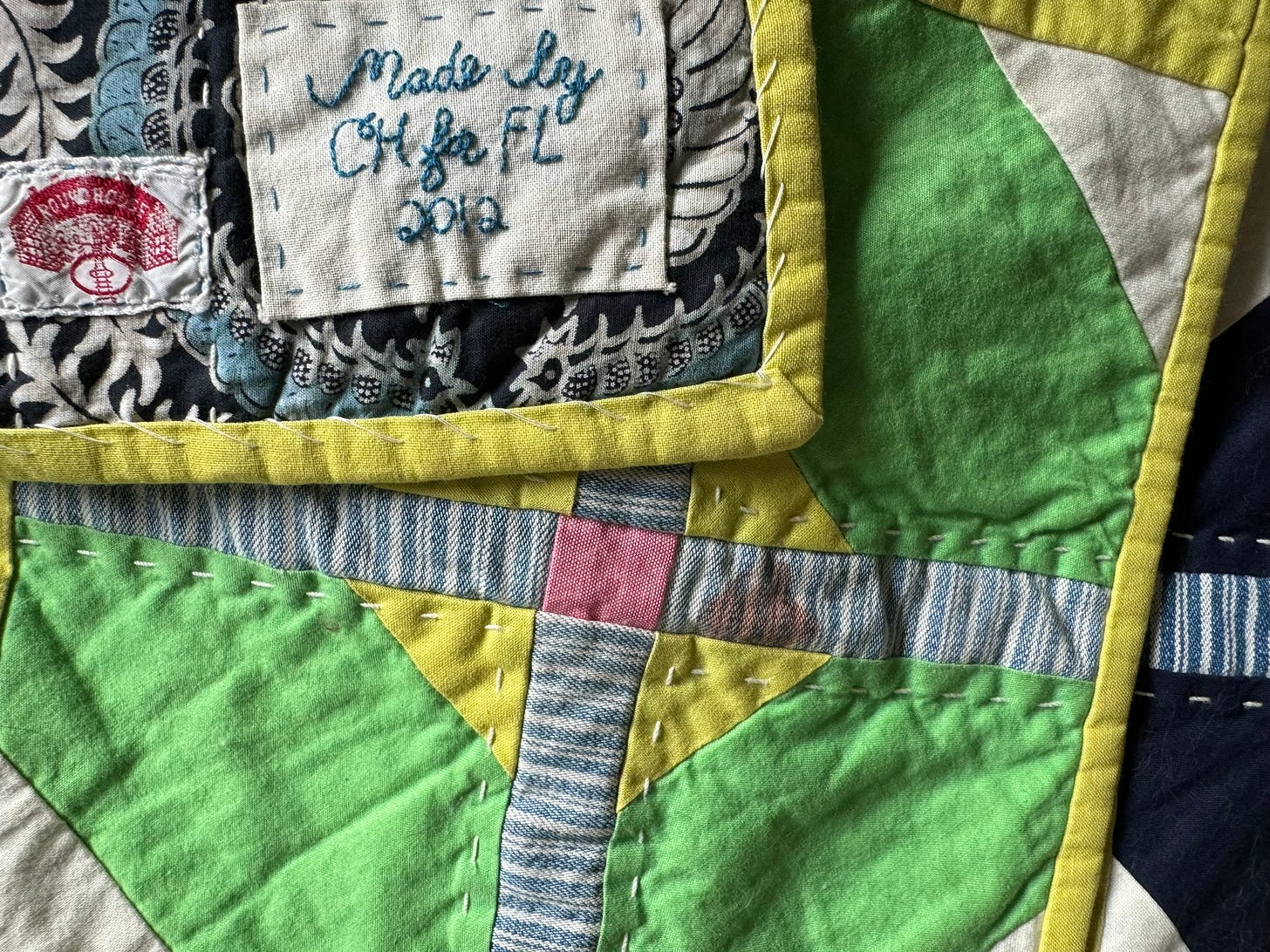
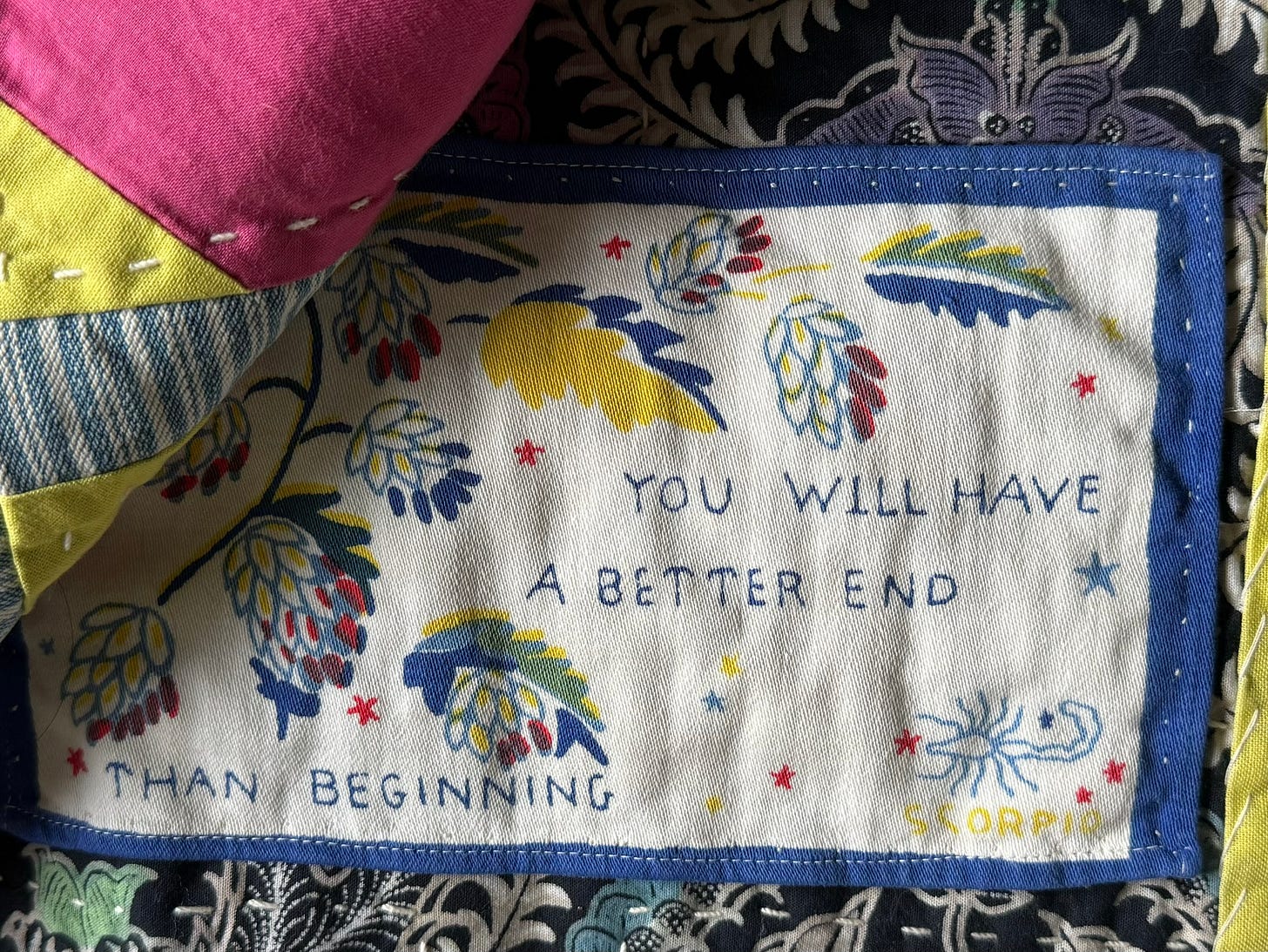

Just got around to reading this post........Going to be thinking about this framework for a while, I think. Also, I would like to note that the 2025 "in" list for my home has included "will writing," so here's to finding some creative ways to think about what happens to all of the stuff and things after we're all gone
Very relatable in so many ways. I was such a Pippi Longstockings fan when I was a kid, but over time I’ve forgotten everything and did not remember the thing finder. Perfect.